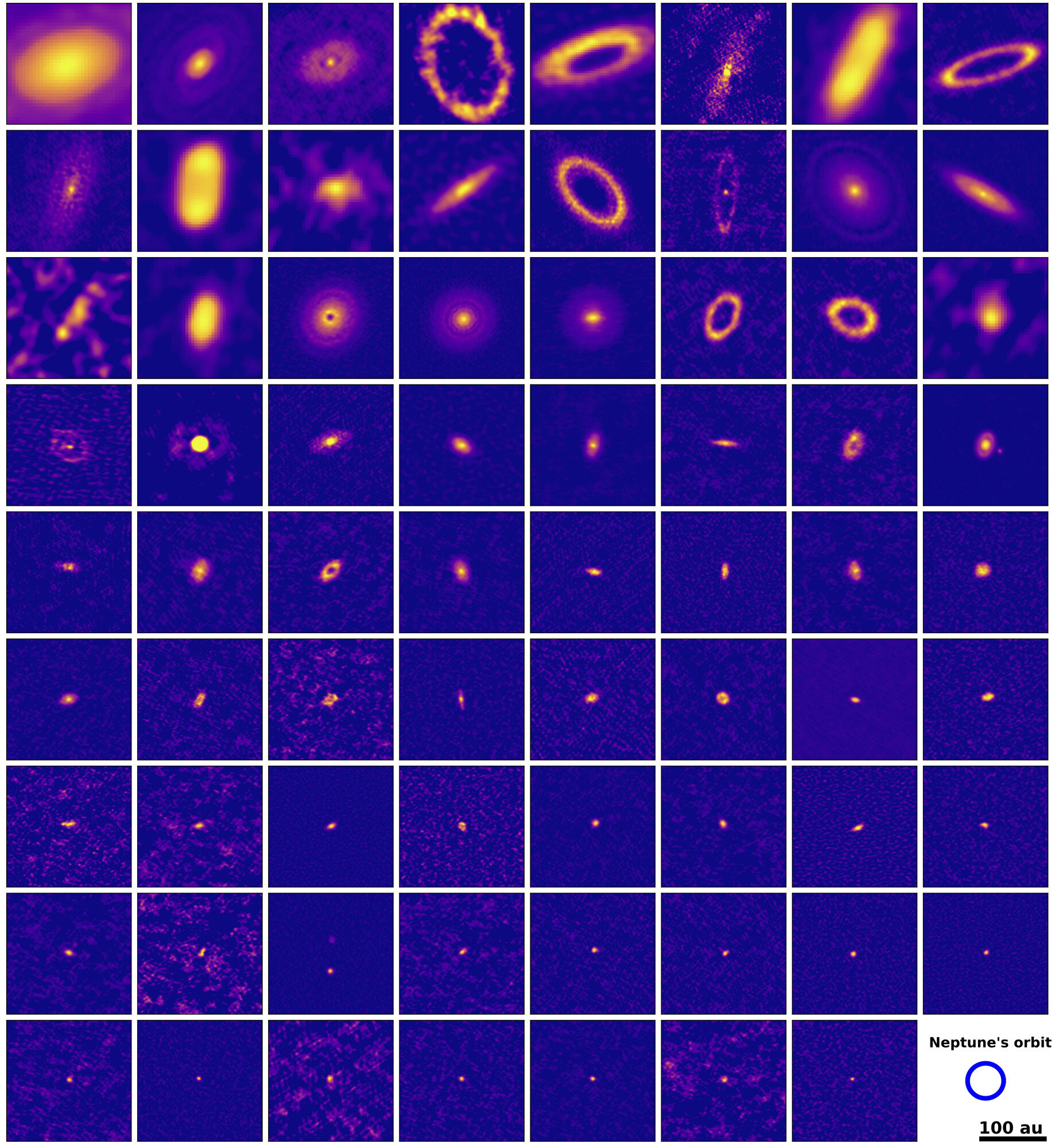A new study using the Atacama Large Millimeter/submillimeter Array (ALMA) in Chile has taken a look at the Lupus molecular cloud complex, one of the closest and largest low-mass star-forming regions in the Southern Hemisphere. There they found 73 protoplanetary disks to examine in closer detail, finding that these planet-forming rings of dust and gas are a lot smaller than we thought.
ADVERTISEMENT
Over the last decade, astronomers have imaged hundreds of protoplanetary disks that will go on to form exoplanets in a process that can last 10 million years or longer. Typically, they have found the disks to be quite large, extending beyond the equivalent orbit of Neptune, our own furthest planet. But new research from scientists from the Leiden Observatory in the Netherlands has suggested that these larger disks may not be the norm. Far smaller disks may dominate, which could have been missed as astronomers focused on larger disks, which are more easily imaged and measured.
Looking at the 73 protoplanetary disks studied, they found that two thirds of them were small, with an average radius of 6 astronomical units, with 1 astronomical unit (AU) being the distance between the Earth and the Sun. For reference, Jupiter lies at 5.2 astronomical units, with the next planet, Saturn, at around 10 au.
The smallest disk identified, meanwhile, stretched to just 0.6 AU – closer to the star than the Earth is to the Sun. Furthermore, the disks generally did not have the typical gaps seen before, where giant planets are believed to form.
“These results completely change our view of what a ‘typical’ protoplanetary disk looks like,” PhD candidate and author on the paper, Osmar M. Guerra-Alvarado, said in a statement. “Only the brightest disks which are the easiest to observe show large-scale gaps, whereas compact disks without such substructures are actually much more common.”

Protoplanetary disks in the Lupus star-forming region.
Image credit: Guerra-Alvarado et al.
These smaller disks were generally found around low-mass stars, between 10 and 50 percent of the size of our own Sun, which are the most common stars in the universe. The observations could explain how the most common planets form, too.
ADVERTISEMENT
“The observations also show that these compact disks could have optimal conditions for the formation of so-called super-Earths, as most of the dust is close to the star, where super-Earths are typically found,” postdoc Mariana B. Sanchez added.
Our own Solar System hosts no super-Earths, more massive than Earth but less massive than the ice giants like Neptune and Uranus. The team believes that our system must have had a larger protoplanetary disk, which may produce larger gas giants, but has no dense collections of dust near the star which can end up producing super-Earths.
“The discovery that the majority of the small disks do not show gaps, implies that the majority of stars do not host giant planets,” assistant professor Nienke van der Marel of the Leiden Observatory added. “This is consistent with what we see in exoplanet populations around full-grown stars. These observations link the disk population directly to the exoplanet population.”
More study will help us get a better idea of planetary formation, and what is the norm. However, it looks like our previous view of planetary formation may need an update.
ADVERTISEMENT
“The research shows that we’ve been wrong for a long time about what a typical disk looks like,” van der Marel added. “Clearly, we’ve been biased towards the brightest and largest disks. Now we finally have a full overview of disks of all sizes.”
The study is accepted for publication in the journal Astronomy & Astrophysics, and is available as a preprint on arXiv.
Source Link: "We've Been Wrong For A Long Time": Protoplanetary Disks Are Much Smaller Than We Thought